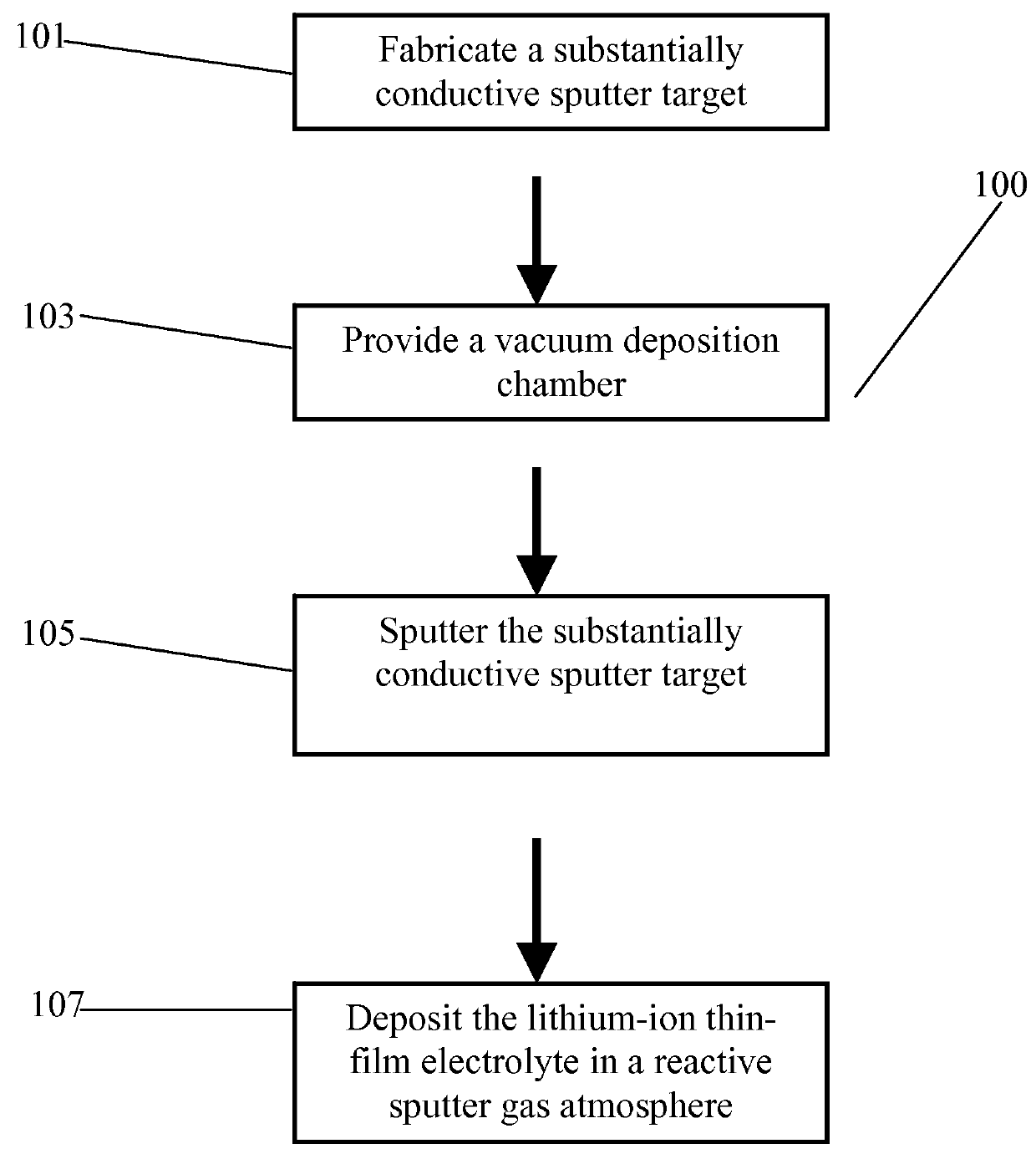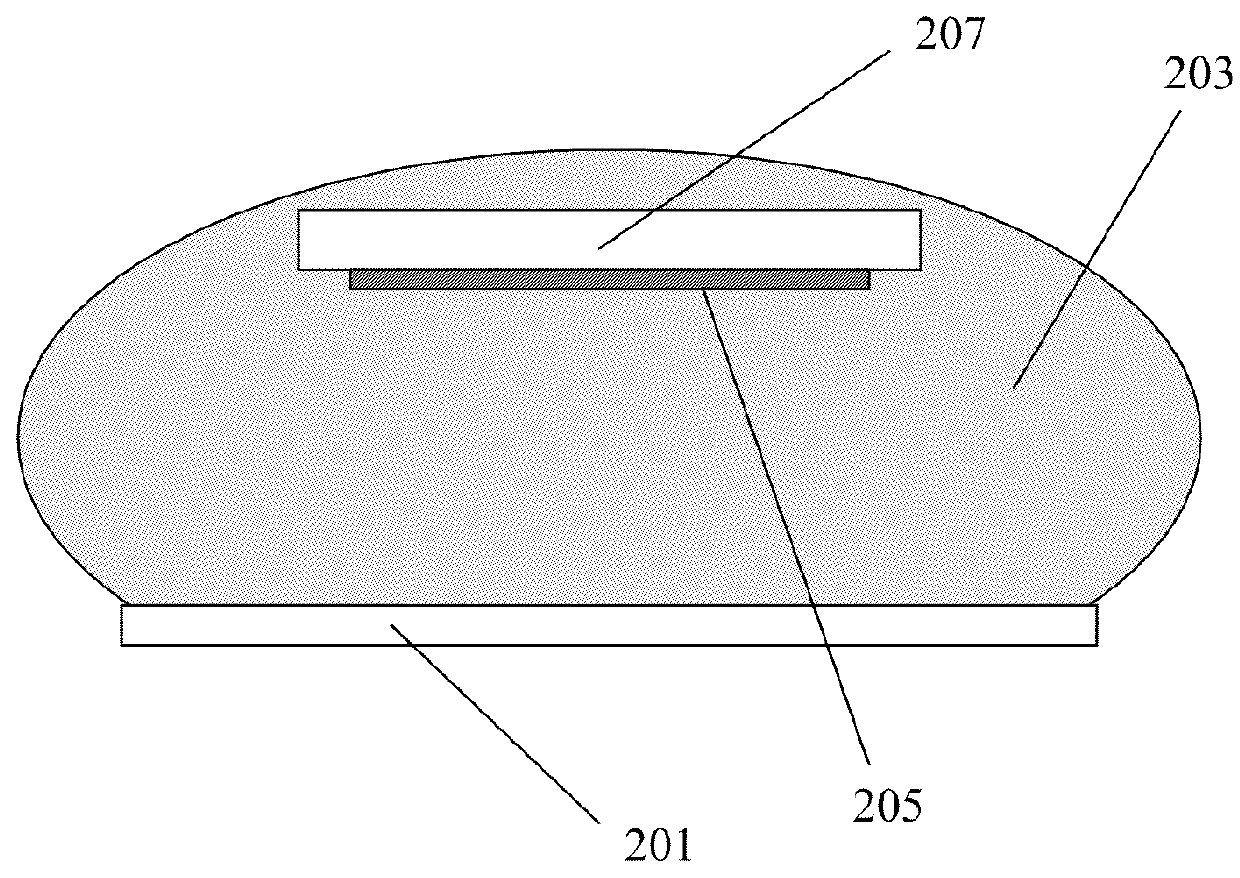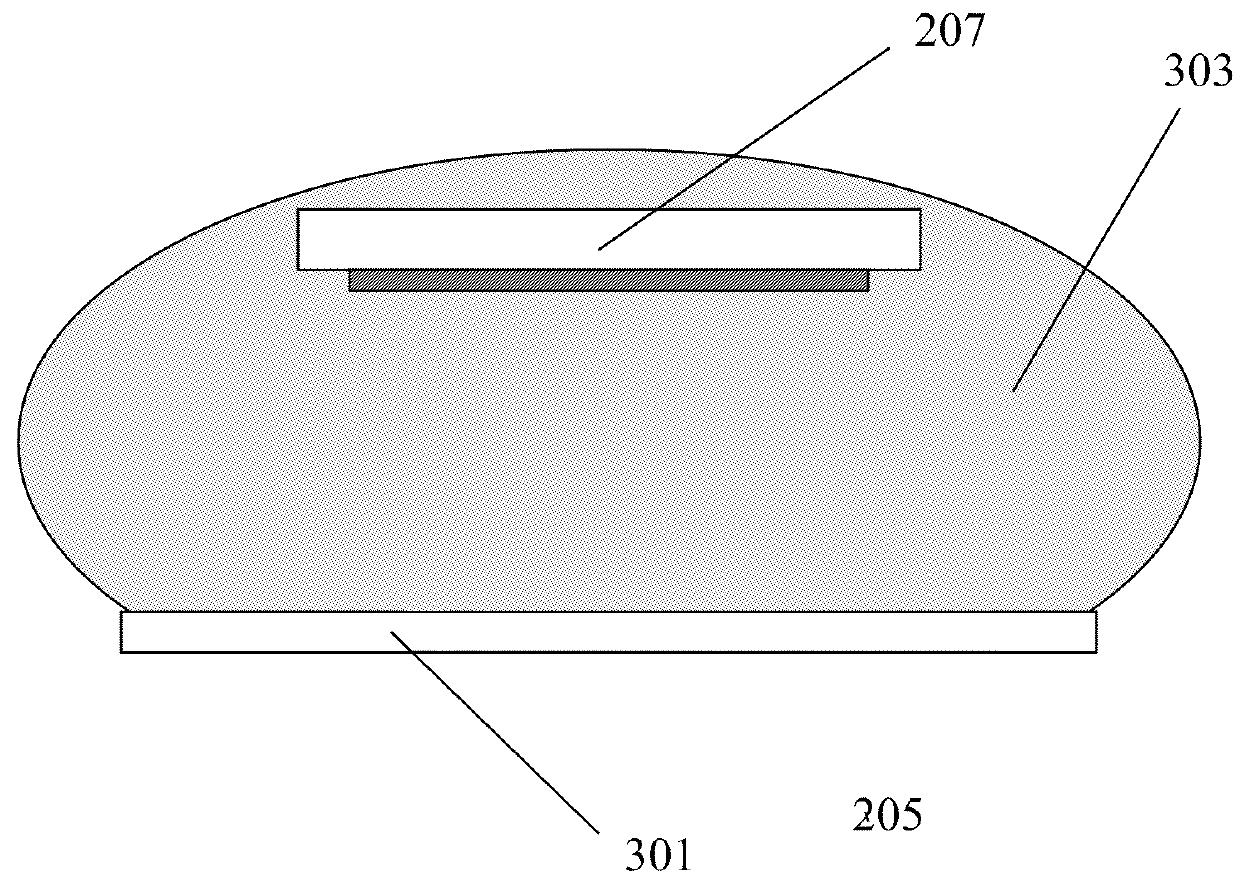Method for sputter targets for electrolyte films
a technology of electrolyte film and sputter target, which is applied in the direction of sustainable manufacturing/processing, non-aqueous electrolyte cells, cell components, etc., can solve the problems of affecting the film growth on the substrate, the use of ceramic insulating sputter target and the rf sputter method may be undesirable, and the sputter process is affected. , to achieve the effect of less frequent maintenance schedule, thermal gradient, and high thermal conductivity ratio
- Summary
- Abstract
- Description
- Claims
- Application Information
AI Technical Summary
Benefits of technology
Problems solved by technology
Method used
Image
Examples
example 1 (fig.2)
[0041]Example 1 (FIG. 2) provides an exemplary embodiment of process 100 in which a LIPON electrolyte film of composition Li2.9PO3.3N0.46 205 may be deposited onto a substrate 207 by DC, pulsed DC, AC, or RF reactive sputtering from semi-conducting target of the composition Li3P 201 when immersed in a sputter plasma plume 203 including the sputtered material and a reactive gas mixture of oxygen and nitrogen, with or without addition of inert gas such as argon. The O2 / N2 ratio is to be adapted to less than 1 / 100 due to the much higher affinity of the depositing Li and P species to bond with oxygen compared to nitrogen. For a given oxygen / nitrogen ratio (for example, 1 / 1000) inside the vacuum deposition reactor both kinetic and thermodynamic factors determine the final stoichiometric parameters x, y, and z in the growing LixPOyNz film. Among the kinetic parameters are the target sputter power (for example, 2000 W for 10 inch in diameter Li3P target), the pulsed duty cycle (for example...
example 2 (fig.3)
[0042]Example 2 (FIG. 3) provides an exemplary embodiment of process 100 in which a LIPON electrolyte film of Li2.9PO3.3N0.46 205 may be deposited by DC, pulsed DC, AC, or RF reactive sputtering from a composite target 301 composed of lithium rich LixP (x>>3) 305 and Li2O, 307 either composited on a microscopic level or on a centimeter scale by alternatingly placing LixP tiles and Li2O tiles substantially close to each other so that when sputtering such target in a reactive, at least nitrogen containing sputter plasma plume 303, with or without addition of inert gas such as argon, the concentration ratio of Li / P yields about 2.9, the O / P ratio yields about 3.3, while the N / P ratio amounts to about 0.46. The microscopic composition of LixP (x>>3) 305 and Li2O 307 may be preferred over the centimeter scale composite, because it provides a semi-conducting surface of the sputter target 301 that is useful for operating the target under DC or pulse sputter conditions.
[0043]Example 3 (FIG....
example 4
[0044 provides an exemplary embodiment of process 100 in which the sputter target comprises P2O5 instead of LixP (x>>3) as provided by Example 3 (FIG. 4) and the so-fabricated sputter target is DC, pulsed DC, AC, or RF sputtered in an atmosphere containing at least nitrogen.
[0045]Example 5 provides an exemplary embodiment of process 100 in which the sputter target comprises PN instead of P2O5 as provided by Example 4 and the so-fabricated sputter target is DC, pulsed DC, AC, or RF sputtered in an atmosphere containing at least nitrogen and oxygen.
[0046]Example 6 provides an exemplary embodiment of process 100 in which the sputter target is fabricated from a microscopic composite of metallic lithium and PN and the so-fabricated sputter target is DC, pulsed DC, AC, or RF sputtered in an atmosphere containing at least nitrogen and oxygen.
PUM
| Property | Measurement | Unit |
|---|---|---|
| electronic conductivity | aaaaa | aaaaa |
| frequency | aaaaa | aaaaa |
| frequency | aaaaa | aaaaa |
Abstract
Description
Claims
Application Information
 Login to View More
Login to View More - R&D
- Intellectual Property
- Life Sciences
- Materials
- Tech Scout
- Unparalleled Data Quality
- Higher Quality Content
- 60% Fewer Hallucinations
Browse by: Latest US Patents, China's latest patents, Technical Efficacy Thesaurus, Application Domain, Technology Topic, Popular Technical Reports.
© 2025 PatSnap. All rights reserved.Legal|Privacy policy|Modern Slavery Act Transparency Statement|Sitemap|About US| Contact US: help@patsnap.com



